
One of the most beautiful and most renowned piazzas in all of Italy is in a little town called Vigevano, a short 30-minute train ride from Milan. One Sunday afternoon not too long ago, I boarded a regional train at Milano Porta Genova to check it out for myself (fun fact: the main road that leads to the front of the Porta Genova train station is Via Vigevano).
The first recorded mention of Vigevano is from the 10th century when the Lombard king Adruin established himself there because of good hunting in the area. A few hundred years later, when the Viscontis came to power in the area, they took over the Lombard fortress. In 1492-1494, the fortress was turned into a grand, lush residence by the Ludovico Maria Sforza (also known as Ludovico il Moro), the Duke of Milan, and the structure they built still stands today. It includes a large covered walkway to transport riders from the old fortifications directly to the palace, a falconry, a large loggiato with 48 columns and Piazza Ducale, which has now become the main sight in Vigevano.
The piazza was originally planned and built by Ludovico il Moro simply as a forecourt for his castle, an elongated rectangle measuring 134 meters on its longest side with the “ideal” proportion of 1:3. It’s surrounded by arched porticos supported by 84 columns, each with a different carved capital. A decorative disk is engraved above each capital featuring famous figures from the Roman and Rennaissance ages as well as several proverbs and mottos. Not until 1680, though, was the piazza closed on all four sides when the cathedral was given a Baroque facade, cleverly designed to close off the square at right angles.
As I made my way from the train station, I saw no one on the street, most of the shops and restaurants were closed, and I suddenly had the sinking feeling that Sunday had been the wrong day to come.
Until I turned the corner into Piazza Ducale and discovered there was a CHOCOLATE FESTIVAL taking place that day! White, sideless tents were set up all over the piazza to shelter the vendors and the spaces between were packed with families lining up to gaze at the wonders on display. Every other person had some sort of chocolate goodness in hand (and more often than not, smeared on their mouth). I couldn’t’ve picked a better day if I had tried!
Wrenching my gaze from all the chocolate, I gazed around at the walls of Piazza Ducale. The current artwork, restored in the 1990′s, was primarily the work of Casimiro Ottone and Luigi Bocca, two artists from Vigevano, who expanded upon discernable traces of the original 15th-century decorations. The beautiful cast iron lampposts were erected in 1911.
After making a full loop, I walked toward Bramante tower, named after the piazza’s architect, Donato Bramante, and up a set of stairs that leads into the courtyard of Vigevano’s Castello Sforzesco. It was a huge, grassy area with large trees and brick and stone buildings on each side. I wandered into the entrance of the covered walkway that leads to the older fortifications, admired Bramante tower from this angle and then headed back into Piazza Ducale.
I walked around a few of the streets outside of the piazza, popped into a few shops and got an espresso in a cozy little café. In the middle of a small piazza in front of a church was a charming fountain depicting St. Francis of Assisi talking to several attentive birds. Vigevano was lovely and I very much enjoyed my time there, but I knew there was one thing I had to do before I left:
Enjoy a cup of melted chocolate ![]()
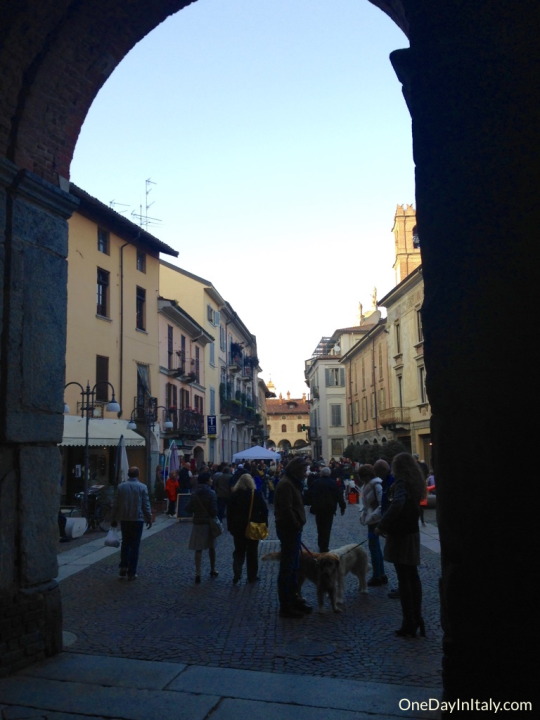
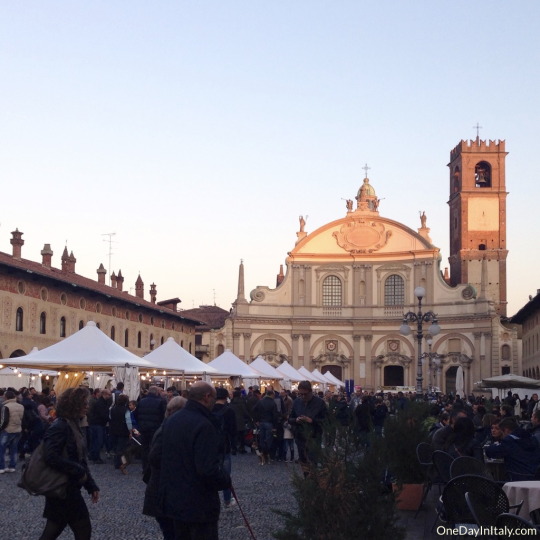
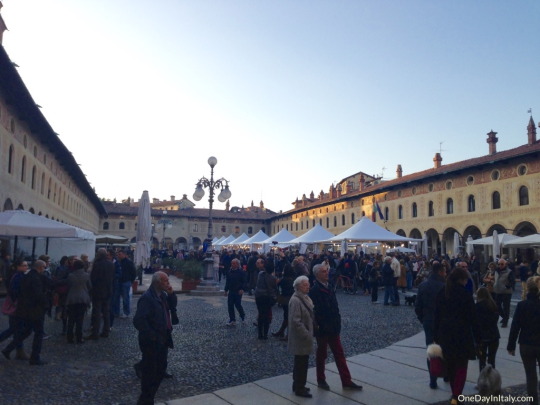
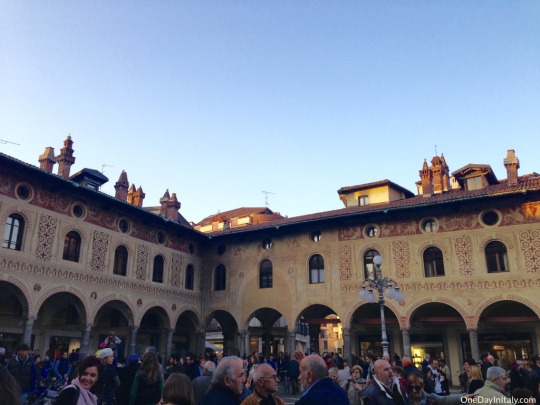
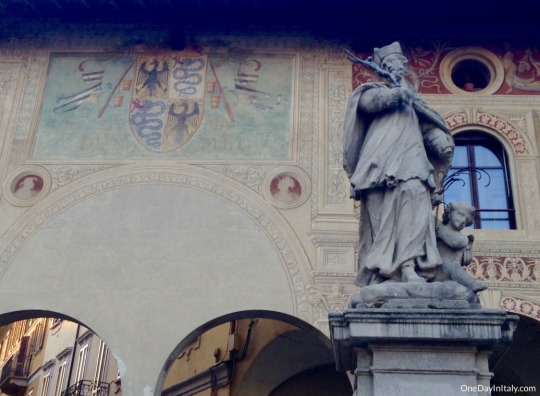
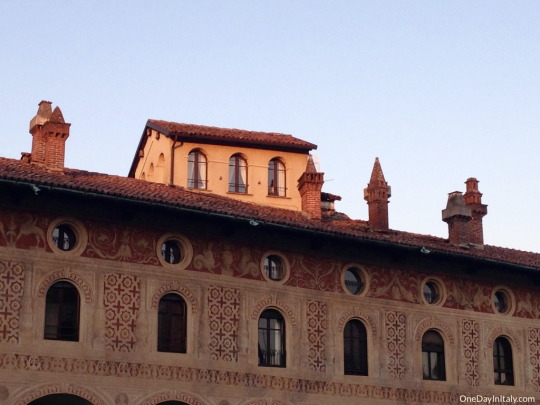
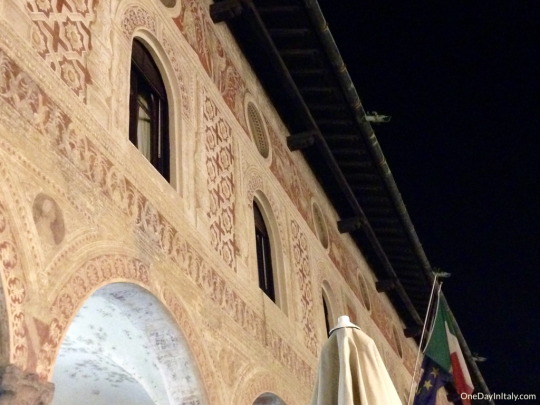
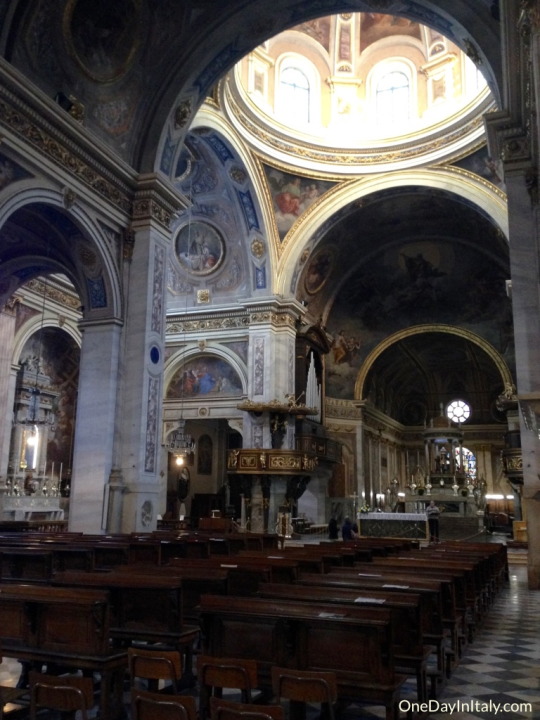
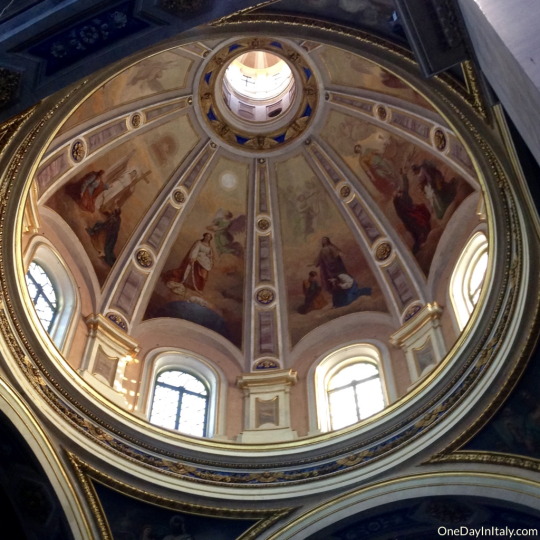
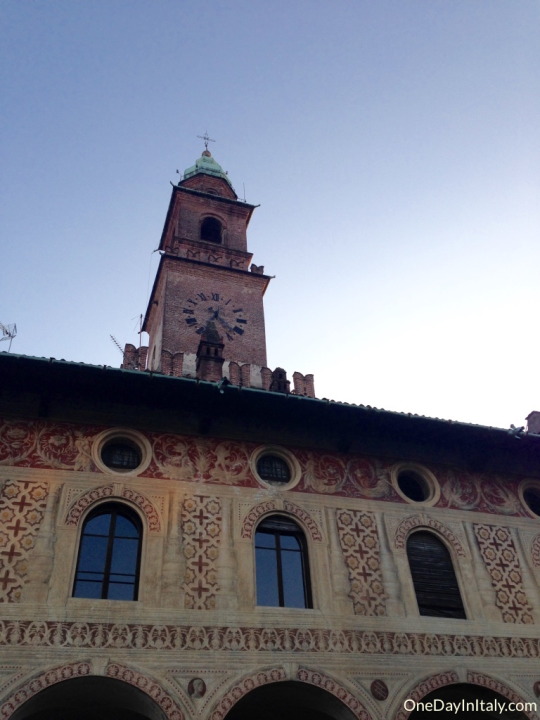
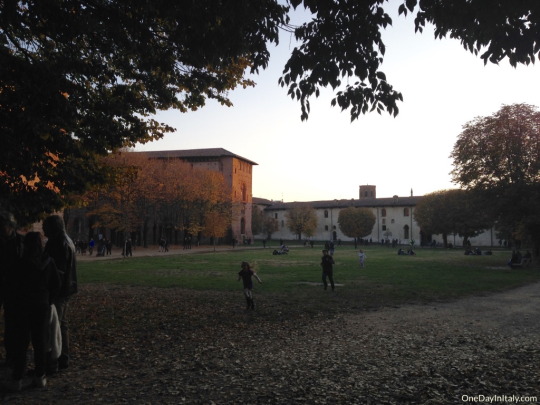

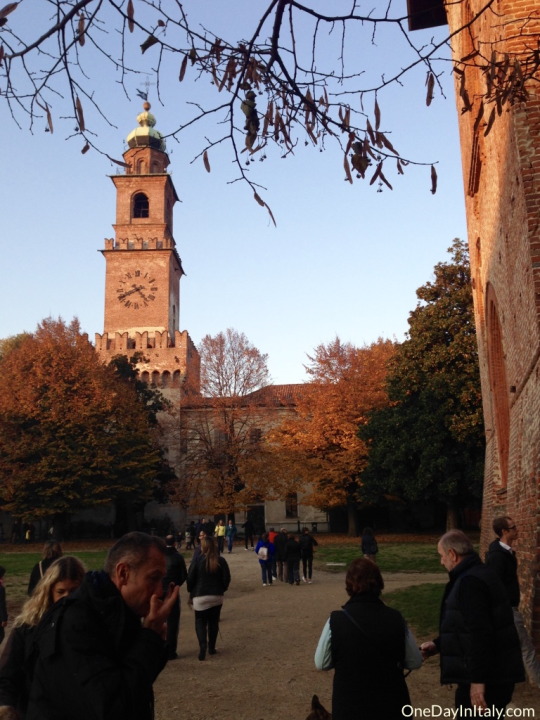
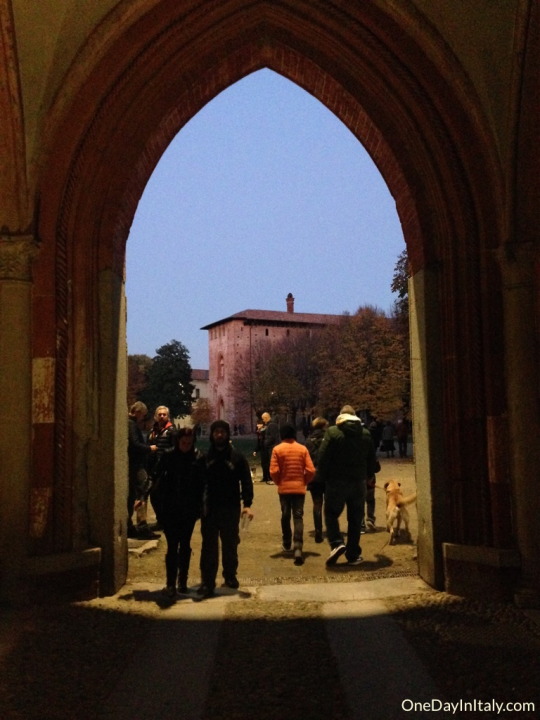
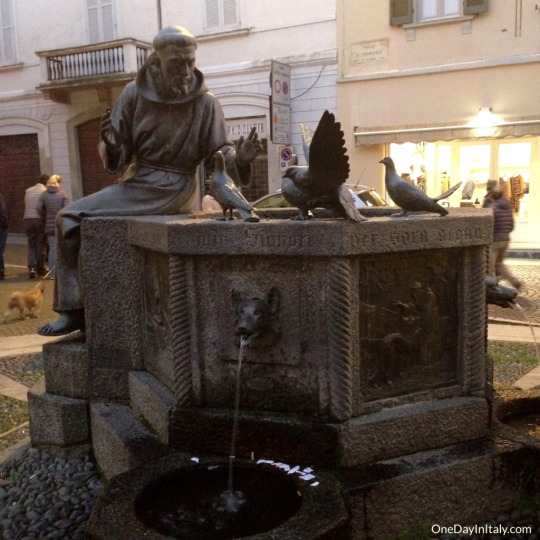
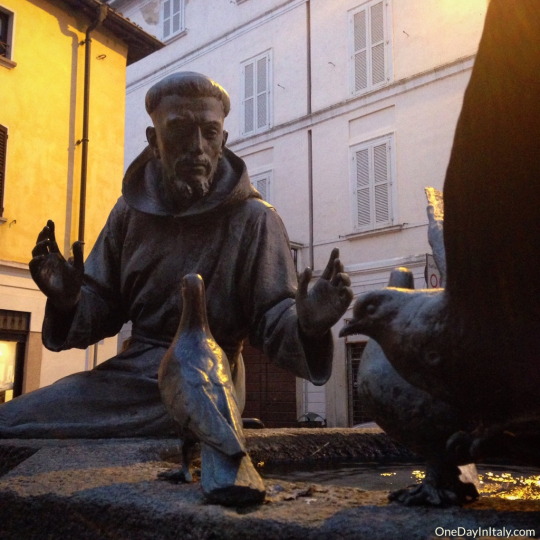
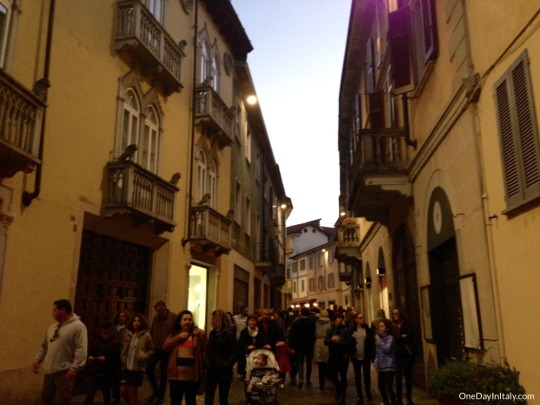
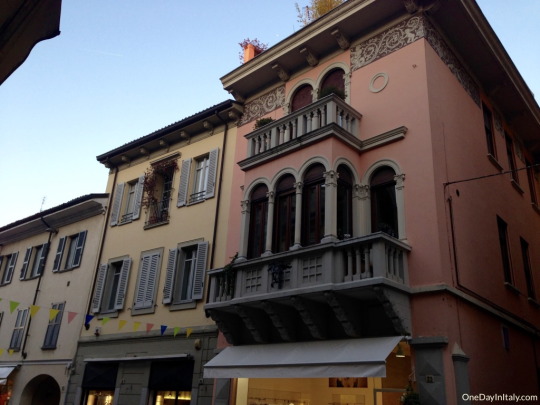
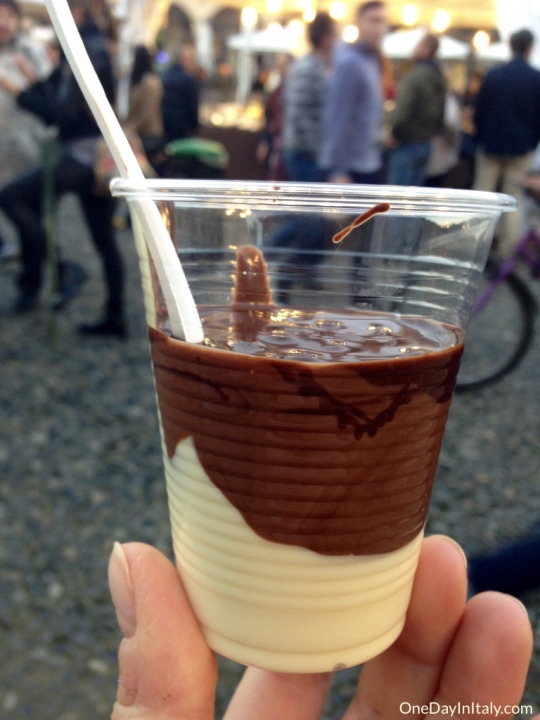
Comments
comments










Leave a Reply